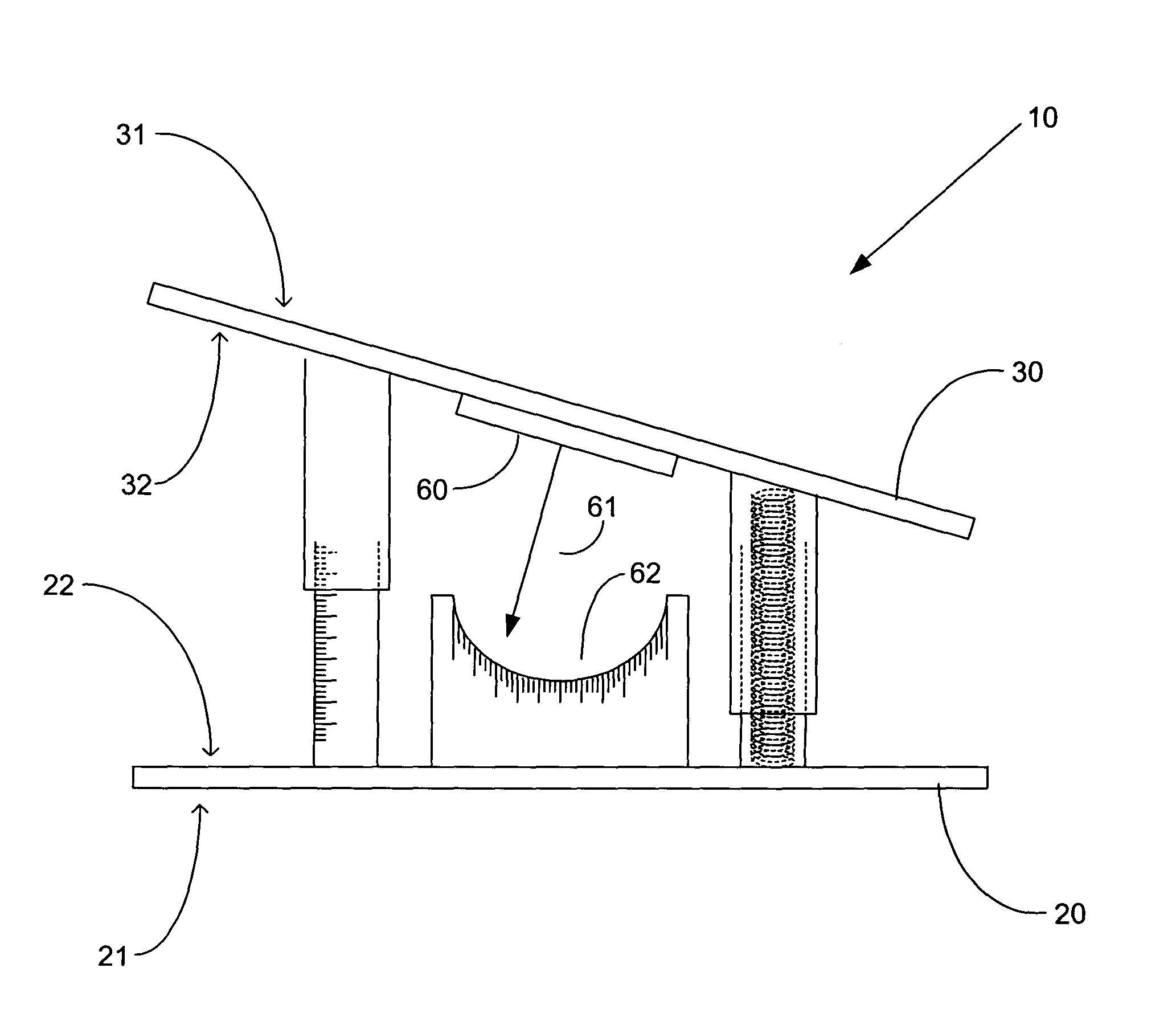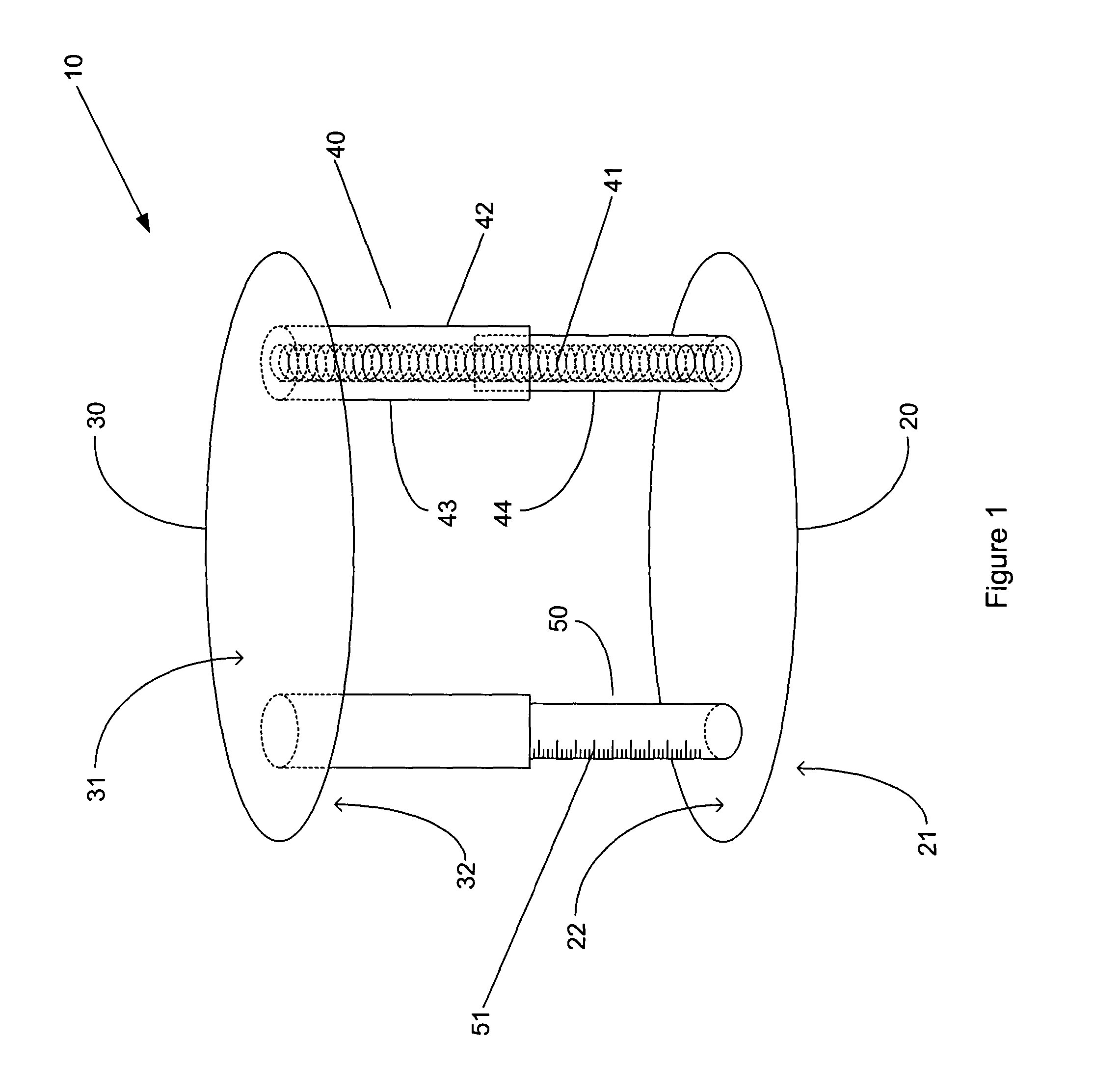Dynamic spacer for total knee arthroplasty
a technology of a dynamic spacer and a total knee arthroplasty, which is applied in the field of surgical instrumentation systems, can solve the problems of inability to fully extend the knee, and excessive tensile force or excessive looseness, and achieves accurate measurement of flexion-extension gaps, simple construction, and convenient use.
- Summary
- Abstract
- Description
- Claims
- Application Information
AI Technical Summary
Benefits of technology
Problems solved by technology
Method used
Image
Examples
Embodiment Construction
[0016]In the following detailed description of the preferred embodiments, reference is made to the accompanying drawings, which form a part hereof, and in which are shown by way of illustration specific embodiments in which the invention may be practiced. It is to be understood that other embodiments may be utilized and structural changes may be made without departing from the scope of the present invention.
[0017]FIG. 1 illustrates one preferred embodiment of the present invention. The dynamic spacer 10 comprises a first planar member 20 having a lower tissue engaging surface 21 and an upper tensioning surface 22 and a second planar member 30 having an upper tissue engaging surface 31 and a lower tensioning surface 32. The shape of the first and second planar members 20, 30 is substantially oval, however, any suitable shape that can be inserted into the surgically prepared knee capsule may be employed. The first and second planar members 20,30 may be constructed of any suitable mate...
PUM
 Login to View More
Login to View More Abstract
Description
Claims
Application Information
 Login to View More
Login to View More - R&D
- Intellectual Property
- Life Sciences
- Materials
- Tech Scout
- Unparalleled Data Quality
- Higher Quality Content
- 60% Fewer Hallucinations
Browse by: Latest US Patents, China's latest patents, Technical Efficacy Thesaurus, Application Domain, Technology Topic, Popular Technical Reports.
© 2025 PatSnap. All rights reserved.Legal|Privacy policy|Modern Slavery Act Transparency Statement|Sitemap|About US| Contact US: help@patsnap.com



